Is Ghent Worth Visiting? My Honest Opinion Based on Real Visits

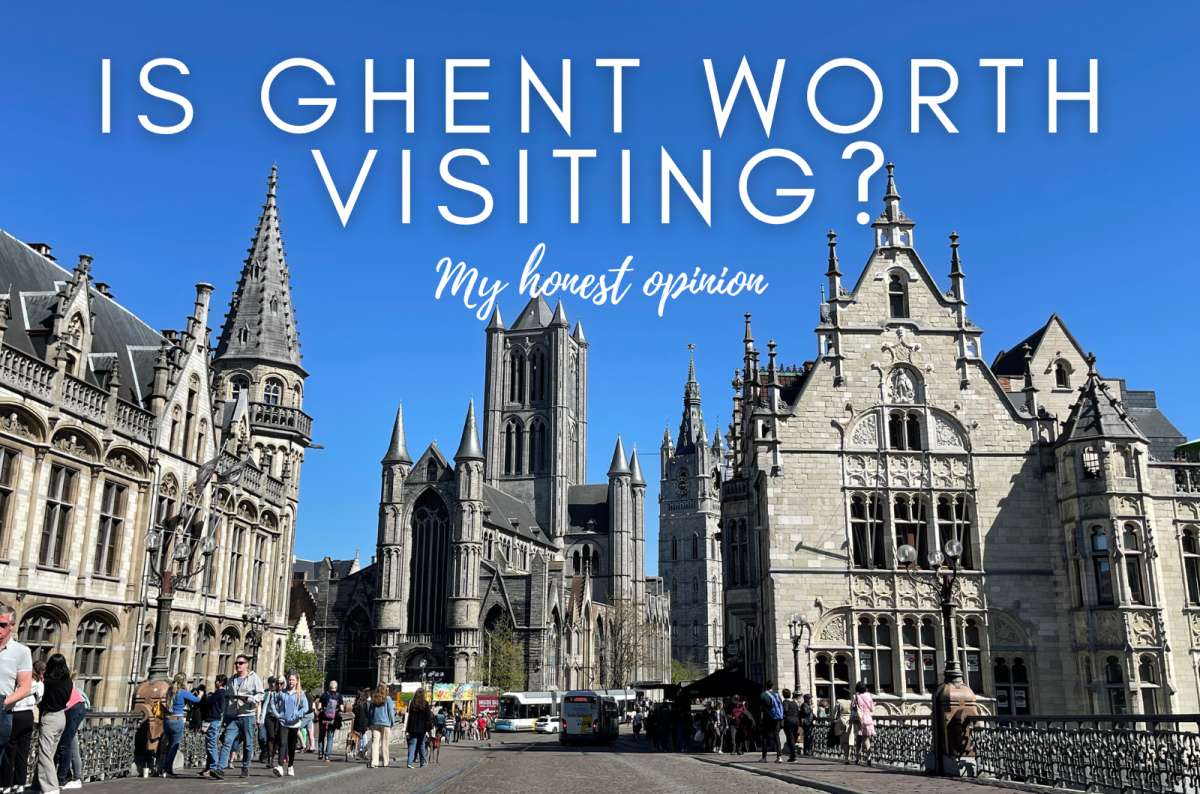
Is Ghent worth visiting? Yes—and I’d say for more than just a quick day trip. Ghent is my favorite Belgian citybecause it’s historic yet lively, with medieval buildings, Gothic churches, and canals on one hand, and real local culture and authentic spots on the other.
Unlike Bruges, Ghent feels like a living, breathing city, not something staged for tourists. You notice it right away when you visit—locals and students are everywhere, cafés along the canals are filled with not just visitors but also residents. That mix is exactly why Ghent stands out for me—I feel I’m getting a peak into a real living place, not just visiting tourist attractions.
I’ve visited Ghent multiple times and think it deserves way more attention than it gets (actually, maybe not—tourist crowds will ruin the place). In this article, I’ll tell you why Ghent is worth visiting—what makes it one of my favorite cities in Belgium, what might disappoint you, and how to make the most of your trip.
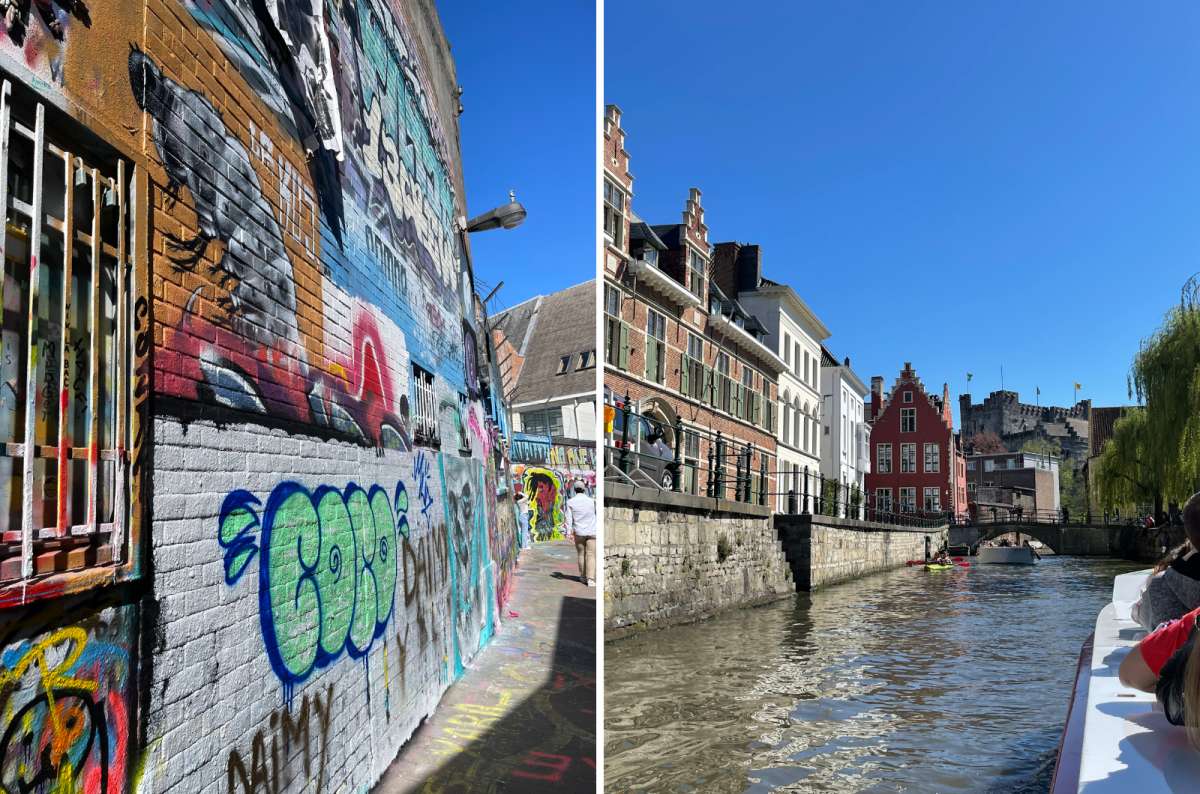
From street art at Werregarenstraat to magical boat canal tours–Ghent has it all
Sometimes, all you need to do is take the first step... I've filtered out the best hotels in Ghent for you
Save it for yourself to come back to later, or share with your friends on social media!
I've already planned your ititnerary for the trip, complete with my travel tips.
This article will:
-
Break down Ghent’s pros and cons honestly
-
Explain why visit Ghent and what it’s best known for
-
Show how to make the most of your time (even in a single day in Ghent)
-
Tell you exactly how long you need in this Belgian city
-
Rank Ghent on value for money, attractions, food, and atmosphere
With this info, you’ll know whether to visit Ghent, when to go and for how long, and what to actually expect from this small city with big energy.
Read more from my Belgium travel blog.
Quick rankings from my Ghent visit
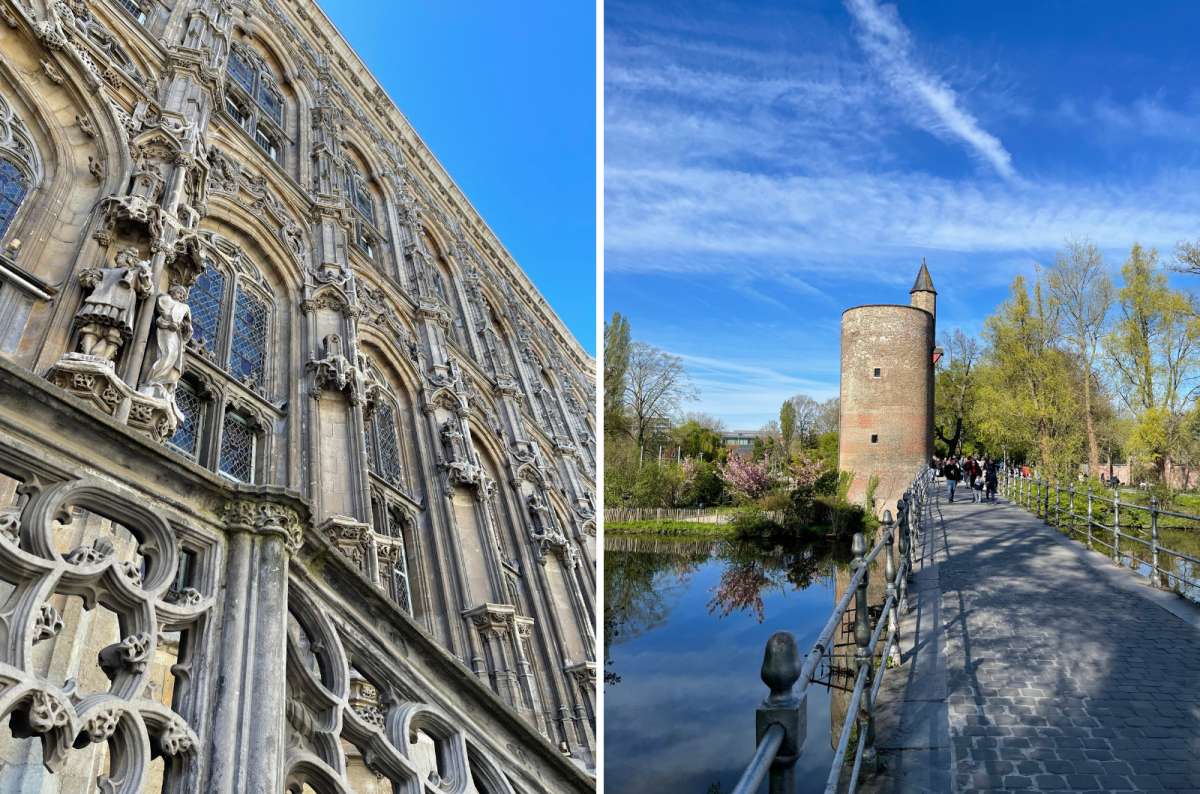
Going from admiring the Ghent Town Hall to a stroll on the Lover’s Bridge is what makes Ghent so loveable
-
Value for money: 10/10
-
History and architecture: 9/10
-
Things to do in a day: 9/10
-
Infrastructure and parking: 7/10
-
Food and café scene: 9/10
-
Overall experience: 95%

1. Who will enjoy Ghent?
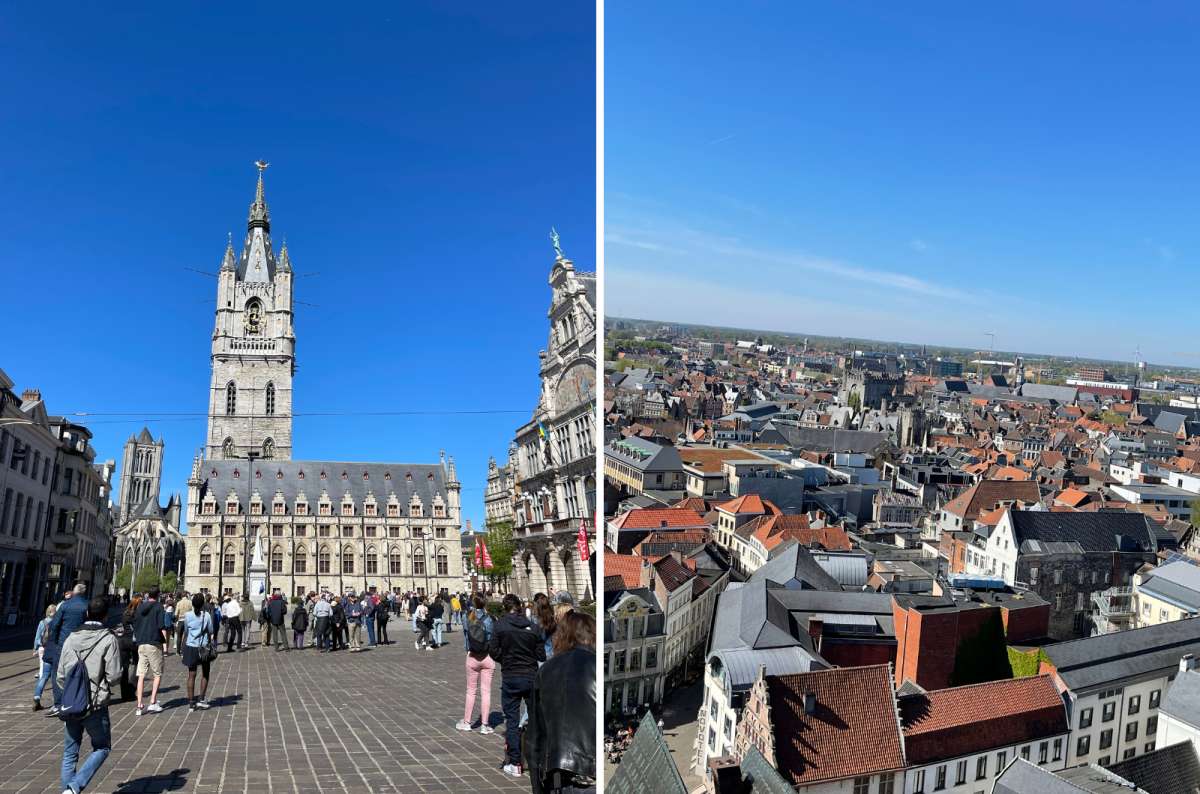
If you can’t resist an authentic, pretty city–Ghent is the right choice for you
Ghent is perfect if you want a Belgian city that still feels authentic but has many interesting things to see and do. It’s lively, walkable, and full of medieval architecture, but also has a cool youthful vibe thanks to it being a university town.
You’ll enjoy Ghent if:
-
you want a balance of history and real city life
-
you prefer fewer tourists than in Bruges
-
you’re into castles, Gothic churches, and picturesque canals
-
you like Belgian beer, Belgian waffles, and great food in general
-
you’re looking for an easy day trip from Brussels or Bruges
Pro hotel tip: Hotel Van der Valk is my favorite hotel in Ghent—I’ve stayed there multiple times. Check it out if you’re ready to book your trip to Ghent:
2. Who should skip Ghent?
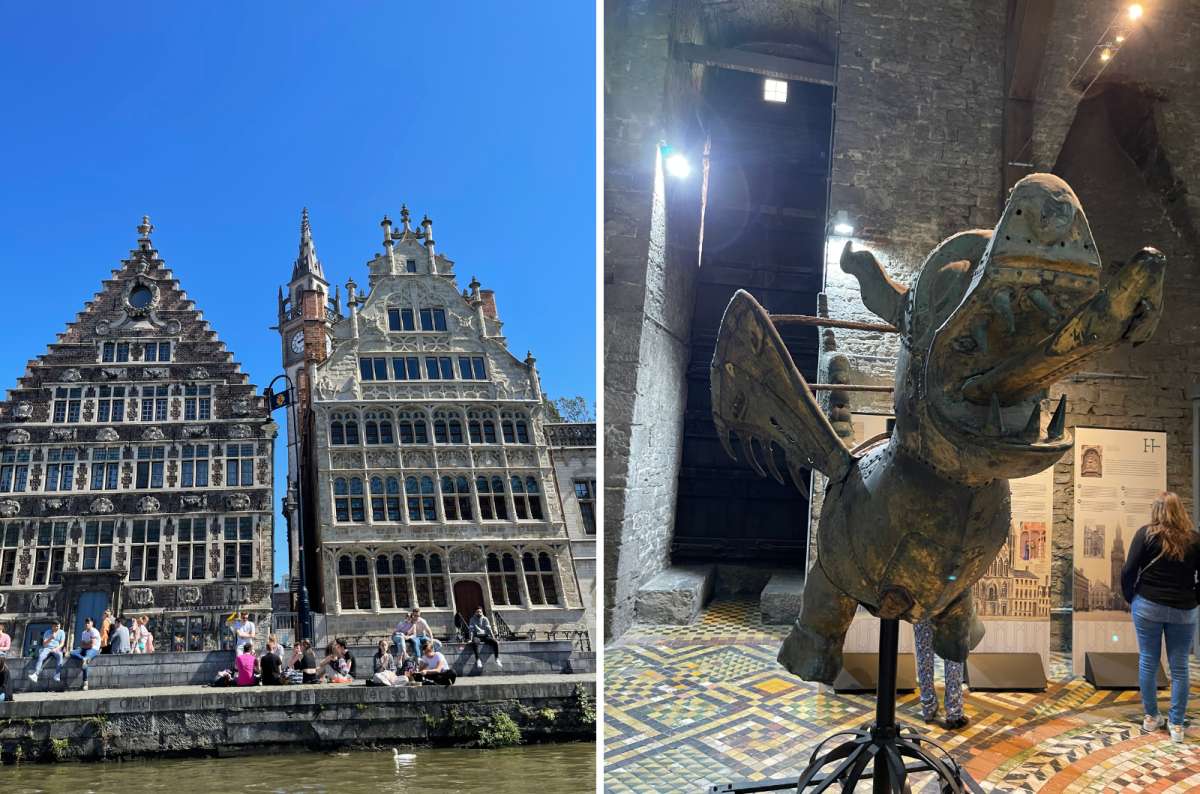
The Graslei area and the Ghent Belfry offer a true taste of Ghent
What are you talking about? Nobody should skip Ghent! But if you’re tight on time, some travelers may prefer Bruges instead. Ghent feels bigger and less “fairytale” than Bruges, and the atmosphere is more city than village.
Don’t include a Ghent visit if:
-
you’re only chasing picture-perfect small city vibes
-
you’re not interested in medieval castles or historical buildings
-
you dislike walking—Ghent’s historic center is relatively large and car-free
3. What is Ghent known for?
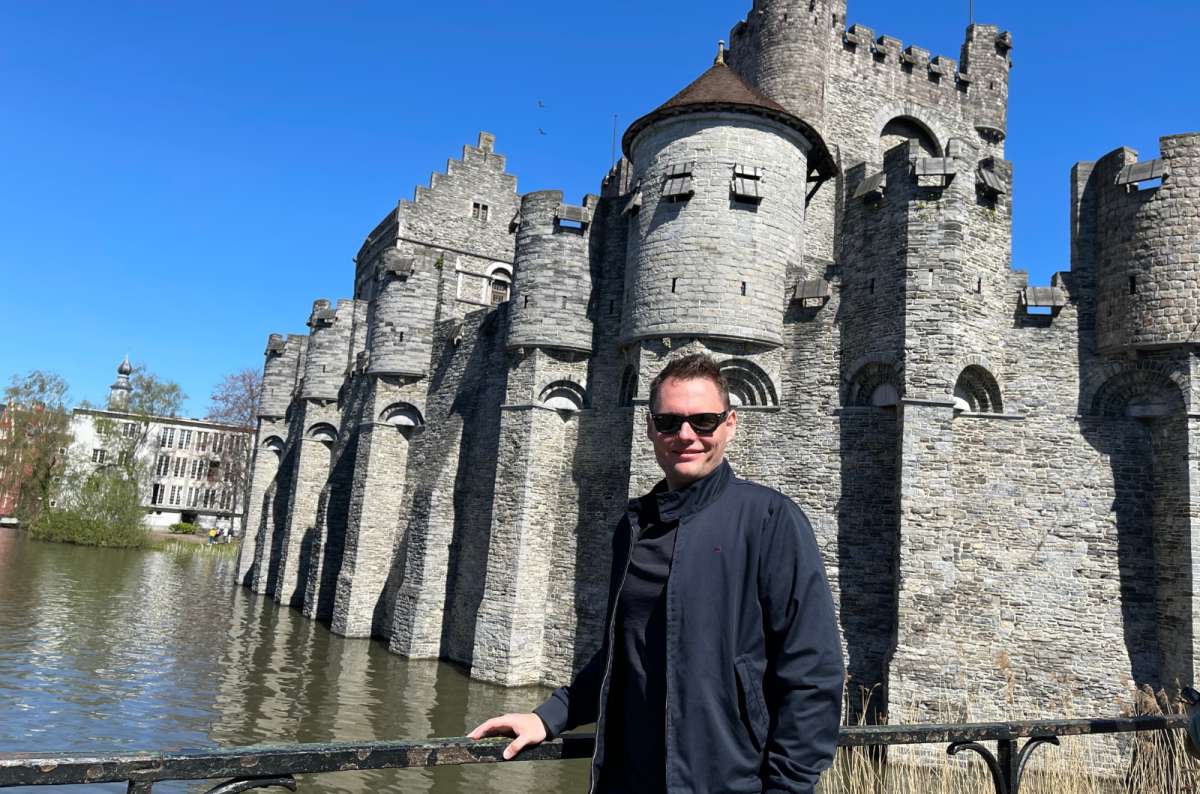
Gravensteen Castle is a staple of Ghent–I personally fell in love with it
Why visit Ghent? When I think of Ghent, I think of a Belgian city that mixes medieval architecture with real city life. It sounds simple but this balance is rare, while in Ghent it’s on point.
I loved that there’s a full medieval castle—Gravensteen—right in the middle of the city, surrounded by cobbled streets, canals, and cafés. Walking through the Old Town, I kept noticing how the 3 famous Gothic towers and historical buildings are such a cool backdrop to everyday life.
And because I really don’t like overtouristed places, Ghent was a breath of fresh air compared to other popular Belgian cities (*cough* one day in Bruges was enough for me *cough*)—it feels authentic and lived in. For me, that mix of history, Belgian beer and waffles, and street art is exactly what
makes Ghent worth visiting.
4. Top 10 things to do in Ghent
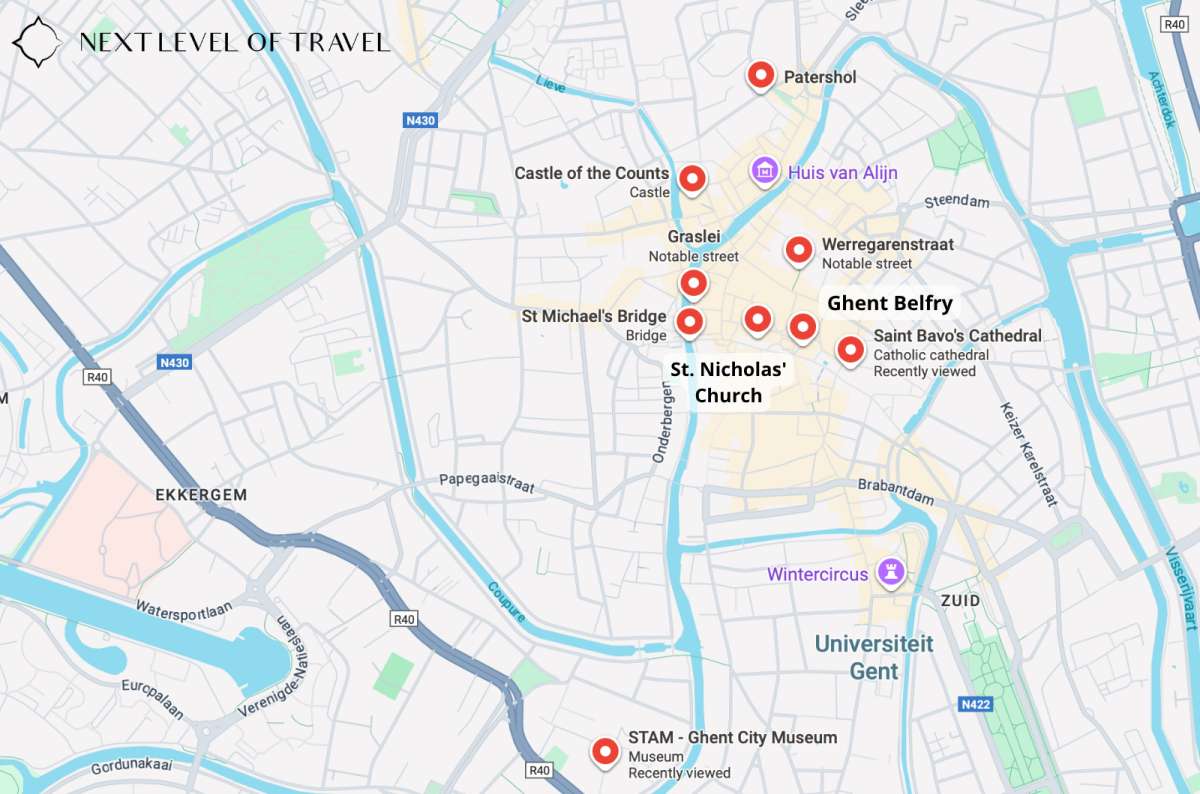
Allow me to introduce your best friend when planning a trip to Ghent
Ghent isn’t short on highlights. These are my personal picks for the best things to do in Ghent—places I actually visited and think are worth your time.
-
Tour Gravensteen Castle (Castle of the Counts)
Ghent’s medieval fortress is the top attraction—complete with a moat and a collection of torture instruments. -
See the famous Ghent Altarpiece in St. Bavo’s Cathedral
The Mystic Lamb is a masterpiece by the Van Eyck brothers is one of Europe’s most important artworks. Take the AR tour! -
Climb the Ghent Belfry
A UNESCO World Heritage Site, the tallest belfry in Belgium, and the place to get panoramic views over Ghent’s Old Town and the three towers lined up in one perfect shot. -
Walk across St. Michael’s Bridge
The most iconic view in the city—see the Leie River, Graslei, St. Nicholas Church, and all three towers.
-
Relax at Graslei
Graslei is considered the city's prettiest riverside spot, ideal for lunch and people-watching. -
Hop on a boat tour
A canal ride in Ghent is a fun way to admire the city’s architecture from the water with lighthearted commentary from the guide. -
Explore the Patershol district
Narrow cobblestone streets, historic houses, and some of the best restaurants in Ghent—perfect for dinner and drinks. -
Admire St. Nicholas Church
One of Ghent’s three towers, this medieval church built from blue-gray Tournai stone. -
Discover Ghent’s street art and graffiti street
Werregarenstraatje is the city’s only legal graffiti street, but murals pop up everywhere across Ghent. It’s a fun thing to look out for as you walk around. -
Visit STAM (Ghent City Museum)
A great first stop if you want context before exploring the historic center.
Do you want a complete list of things to do in Ghent to decide for yourself if Ghent is worth visiting? I’ve got you covered:

5. How to make the most of Ghent
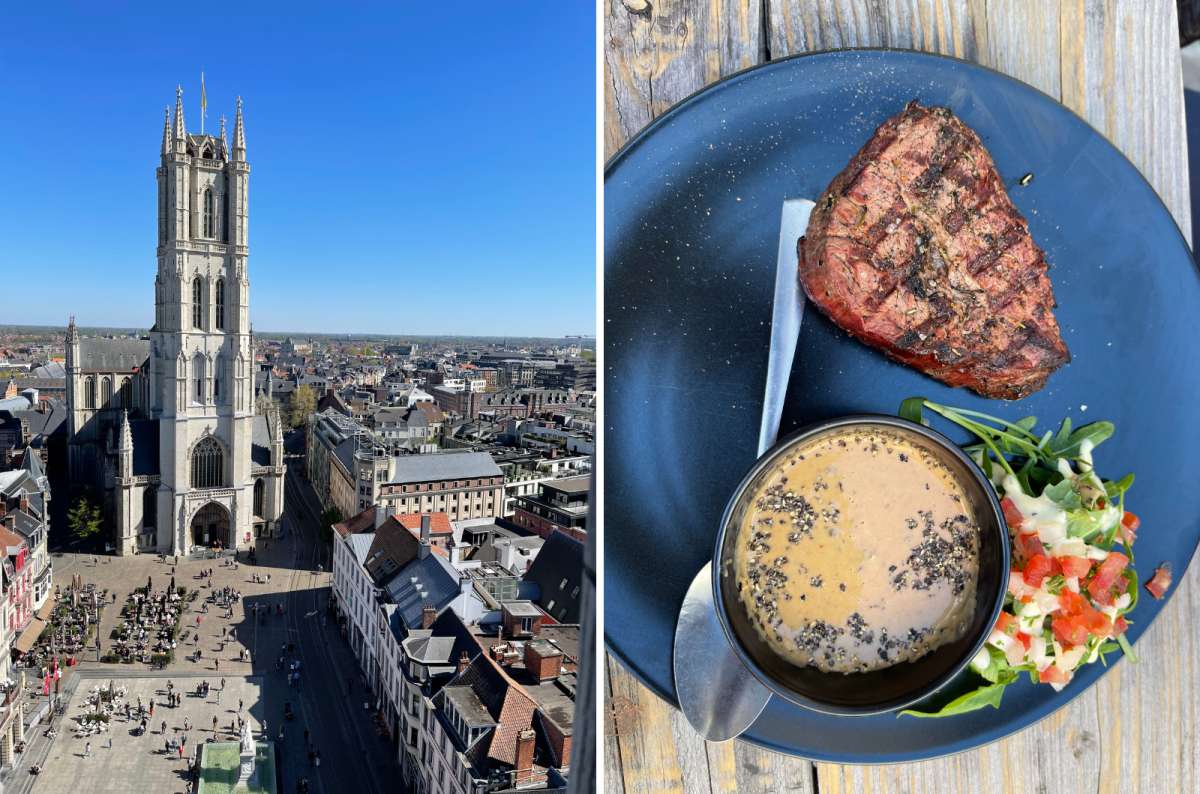
St. Bavo’s Cathedral and Belgian food is a great pairing
In order to make Ghent worth visiting, you’ll want to balance the big sights with local experiences and also give yourself some downtime to see past the surface (and eat great food!).
Visit Ghent’s main attractions like Gravensteen Castle, St. Bavo’s Cathedral with the famous Ghent Altarpiece, and the Ghent Belfry, then slow down and soak it all in along the picturesque canals at Graslei. Add in a boat tour, go to Patershol for dinner and Belgian beer, and wander past street art and graffiti street to see Ghent’s creative side. Don’t forget Belgian waffles or fries—this is still Belgium after all!

6. Food and drinks in Ghent
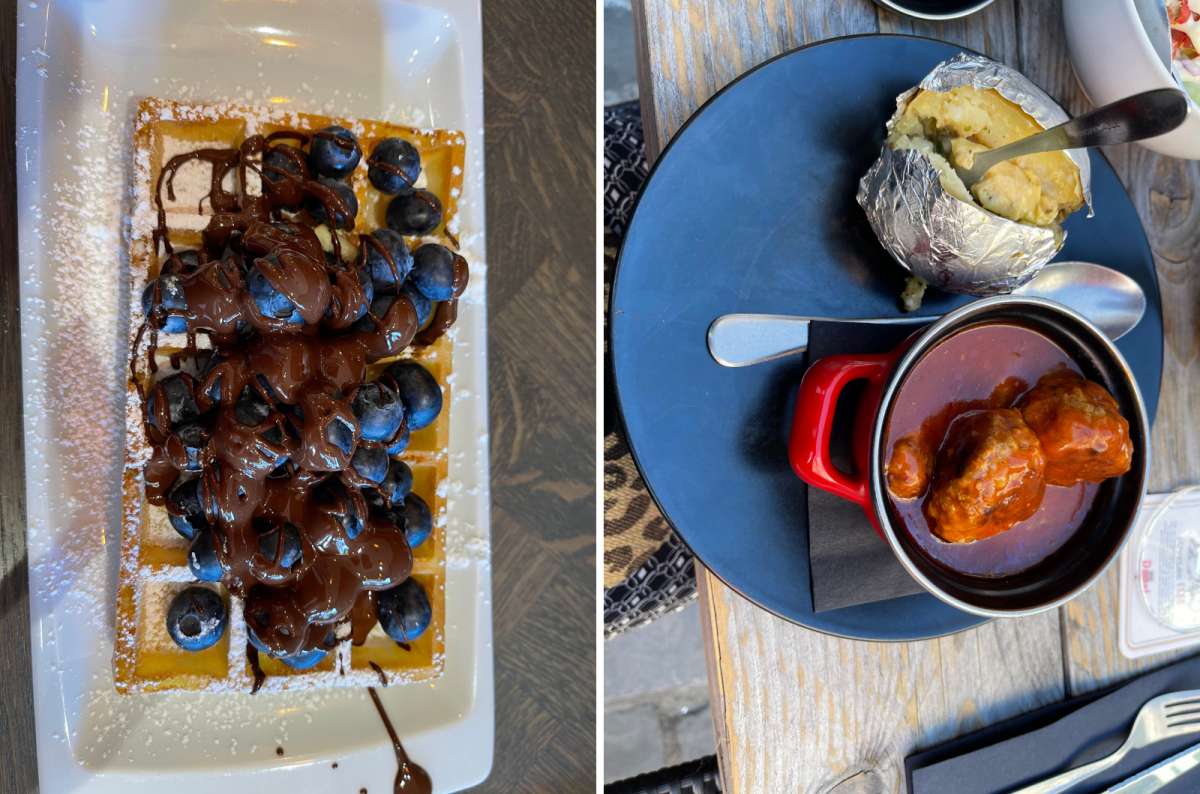
Take this from a true foodie–it’s worth it
The food scene is another reason Ghent is worth visiting. I’ve eaten everything from classic Belgian stew to some of the best burgers in the country in Ghent, plus Belgian waffles, chocolate, and if you drink, trying different Belgian beers is one of the best things about visiting Belgium!
- Bridge sits right next to St. Bavo’s Cathedral, and I rank it among my top restaurants in Belgium. My beef stew with crispy Belgian fries tasted even better with the view of the cathedral as a bonus.
- ’t Koningshuis is a must if you’re into burgers. This place serves what I’d call the best burger in Belgium, complete with fries served in a paper bag that somehow stay crisp forever.
And of course, don’t skip Belgian waffles and chocolate shops—both easy to find in Ghent’s Old Town. I strongly urge you to check Google Maps for real reviews, because if there are two things that are geared towards tourists and the quality comes on a wide spectrum, it’s waffles and chocolate.
Or just stick to beer—I’ve never had a bad one in Belgium.
Fun fact: Traditional Belgian waffles come in two varieties: Liège waffles and Brussels waffles. Liège waffles are thick and chewy, with crunchy sugar pearls inside, and Brussels waffles are lighter and airier.
7. Is Ghent expensive?

Every time I’m visiting Ghent, I feel it’s incredibly good value for my money. It’s fairly priced for a popular Belgian city—in line with prices in Belgium that already aren’t extremely high and without the tourist mark up of some other famous places.
Here are some examples to give you a better idea of the prices in Ghent:
- Hotels in the historic center range from boutique B&Bs to stylish 4- and 5-star properties, with many options in the EUR 150–200 range.
- Expect to pay EUR 60–70 for a dinner for two in a nice restaurant and about EUR 4–5 for Belgian beer in local bars (can be more in tourist traps)
- You’ll pay EUR 10–13 for main attractions like Gravensteen Castle or the Ghent Belfry. The only more expensive thing is the AR tour in St. Bavo’s Cathedral, but it is worth every cent—it blew my mind!
Pro tip: I list all attraction prices in my one-day itinerary for Ghent, so you can quickly see how much to budget for your Ghent trip.

8. What the architecture in Ghent Old Town looks like
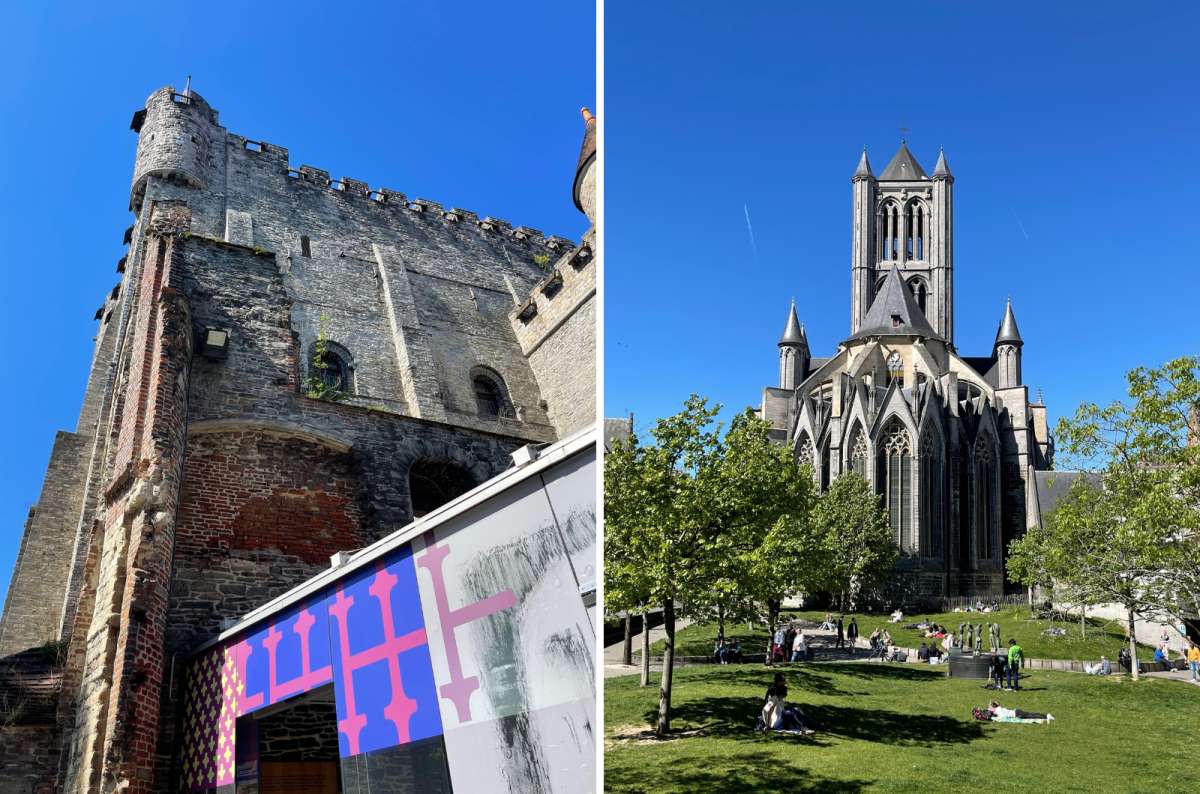
Gravensteen Castle and St. Nicholas’ Church are prime example of just how beautiful Ghent can be
Ghent’s Old Town is full of medieval architecture, but it still manages to feel cool. I’ll say it again—this mix of old and cool makes Ghent worth visiting (which is why I’ve been back more than once).
The historic center has one of the largest pedestrian zones in Europe, so you can walk past Gothic churches, cobbled streets, and rows of photogenic buildings without worrying about tumbling into traffic while you stare upwards.
Whenever I looked up, the three towers—St. Bavo’s Cathedral, the Ghent Belfry, and St. Nicholas Church—were always there. Down by Graslei and Korenlei, the old guild houses line the Leie River, now full of cafés and restaurants. And my ultimate favorite, the Gravensteen Castle sits right in the middle of town (surrounded by a moat, mind you!), reminding everyone of Ghent’s rougher medieval side.
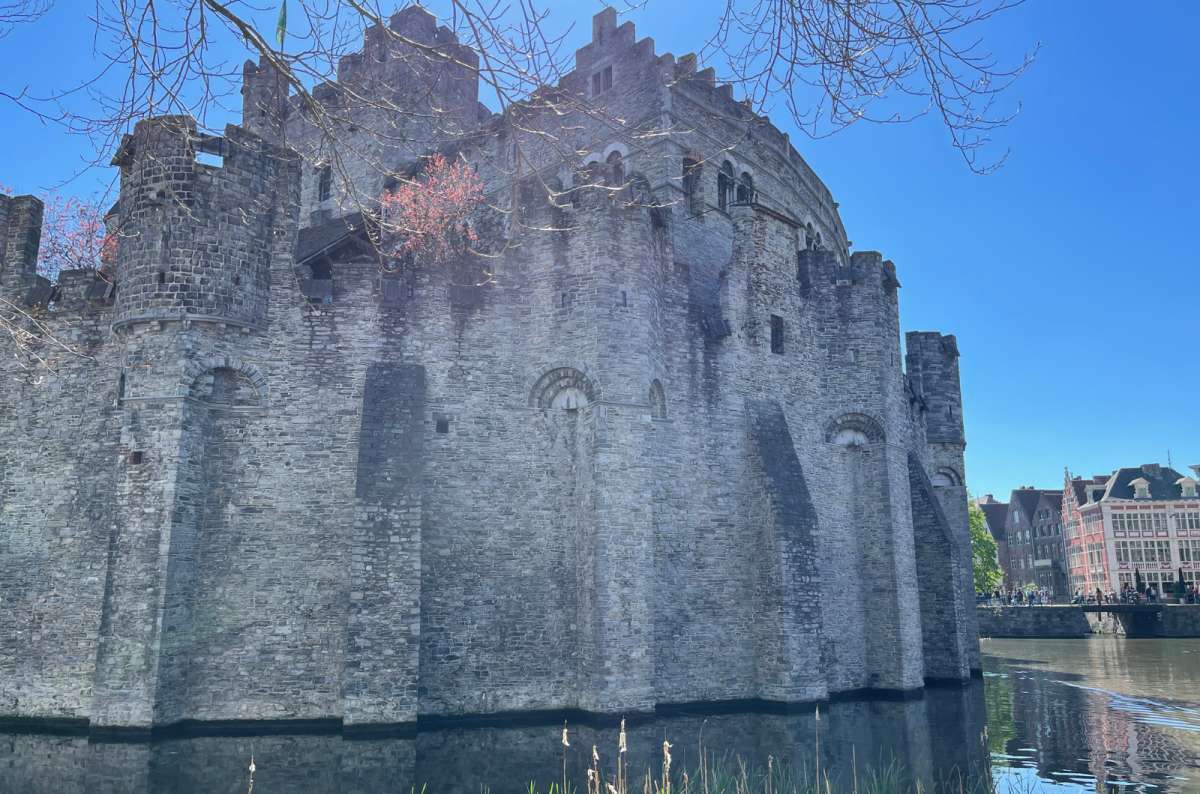
I think you get how much I enjoyed Gravensteen Castle
What I liked most is that the Old Town isn’t frozen in time. Parts are UNESCO Heritage listed, but it’s still a living city. Students, locals, and tourists all share the same streets, and once you step outside the center, you’re back in a regular Belgian city with shops, offices, and trams.
For context, Ghent has about 265,000 people, making it Belgium’s 3rd largest city (after Brussels and Antwerp), but the tourist core is small enough to walk across in 20 minutes.
9. How many days do you need in Ghent?
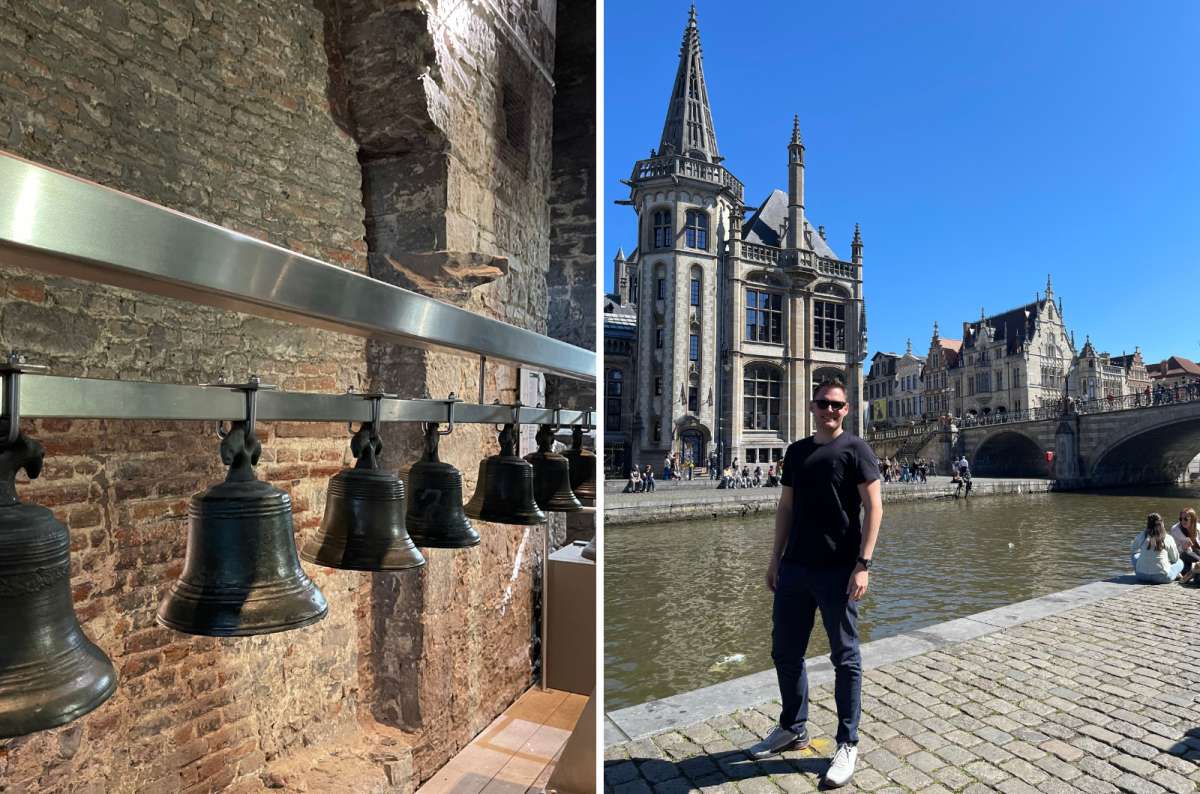
You can take it from the bells in the Ghent Belfry over St. Michaels Bridge and enjoy Ghent in a day
One day in Ghent is enough to see the main attractions if you plan well (and I have: get my detailed Ghent itinerary).The city center is compact, so you can cover a lot on foot, though some spots, like the great STAM Ghent City Museum and the train station will require some sort of transportation. You can even visit Ghent on a day trip from Brussels.
That said, I strongly recommend staying overnight. Evenings in Ghent are fantastic—when the day-trippers leave, the historic center lights up and the bars and restaurants fill up with not just tourists. The atmosphere is a cross between relaxed and buzzing, and it’s a completely different vibe than during the day.

Pro tip: If I had to choose between staying overnight in Bruges or Ghent, I’d stay in Ghent every time and take a day trip to Bruges from there. Ghent has the better evenings, more authenticity, and still plenty of great food and Belgian beer to keep you busy. And I say that even though I’m no party animal.
My hotel tips for Ghent:
My go-to hotel in Ghent is Van der Valk. It’s comfortable, 4-star, and a place I always look forward to returning to. That said, I only stay there when I travel by car.
If you’re looking for something more central, check out Pillows Grand Boutique Hotel Reylof. It’s literally perfect.
10. Best time to visit Ghent
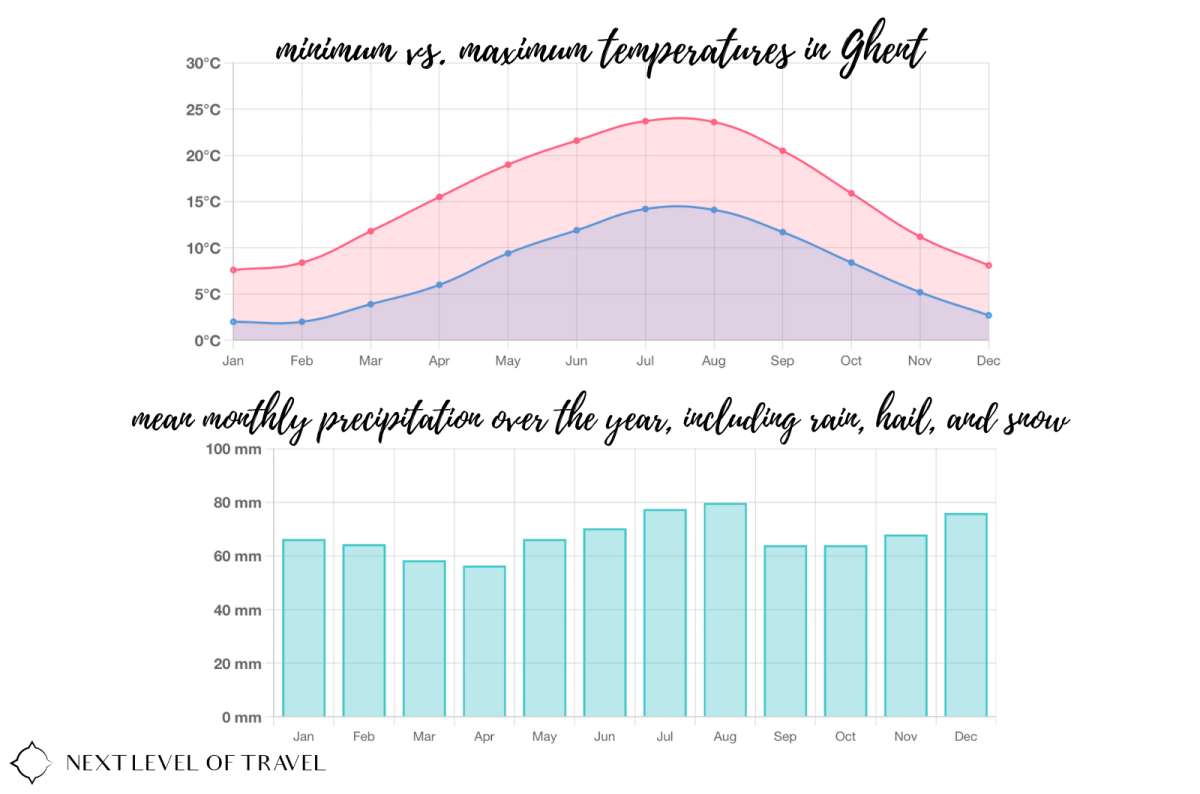
July and August are the trickiest in terms of weather
From my own trip, I’d say the best months to visit Ghent are April, May, June, September, and October—the weather is mild and there are fewer tourists.
July and August are peak season, and while the city can feel more crowded in summer in general, this is also when the Gentse Feesten (Ghent Festivities) happens—and the crowds get insane. It’s a ten-day cultural festival that brings over two million visitors for concerts, theater, and parades.
If you prefer a calmer vibe, stick to spring or early fall. And whatever month you go, I recommend staying at least one night—Ghent in the evening is something else, with the old buildings lit up and the cafés and bars full of locals.
11. Getting to and around Ghent
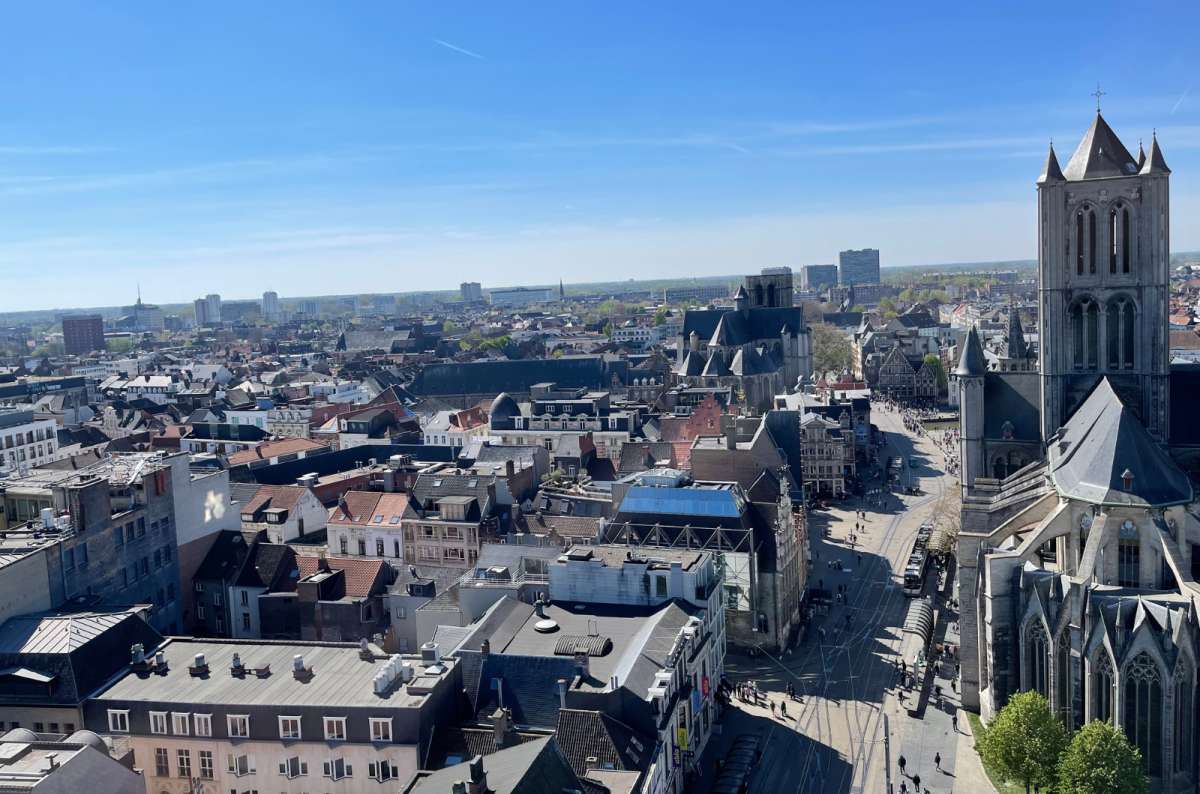
You can walk the tourist areas of Ghent, but there are trams to help out
Ghent is centrally located in the Flanders region, making it one of the easiest Belgian cities to visit.
-
By train: From Brussels, trains to Gent-Sint-Pieters station take about 40 minutes and cost around EUR 11. From Bruges, it’s even faster—about 25 minutes. Trains run frequently.
-
From the train station: Ghent’s historic center is about 2 km (1.2 mi) away. You can walk in 20 minutes, take a tram (EUR 2.50, 10–15 minutes), or hop in a taxi for EUR 15–20.
-
By car: Driving into Ghent isn’t the best idea. The historic center is one of the largest car-free zones in Europe—you and your car are not wanted. Parking in the center is limited. If you have to, aim for one of the parking garages, they cost EUR 1.50–2.50 per hour.
The city center is very pedestrian-friendly and compact enough that you can walk everywhere, with all the main attractions clustered close together.

Final verdict: is Ghent worth visiting?
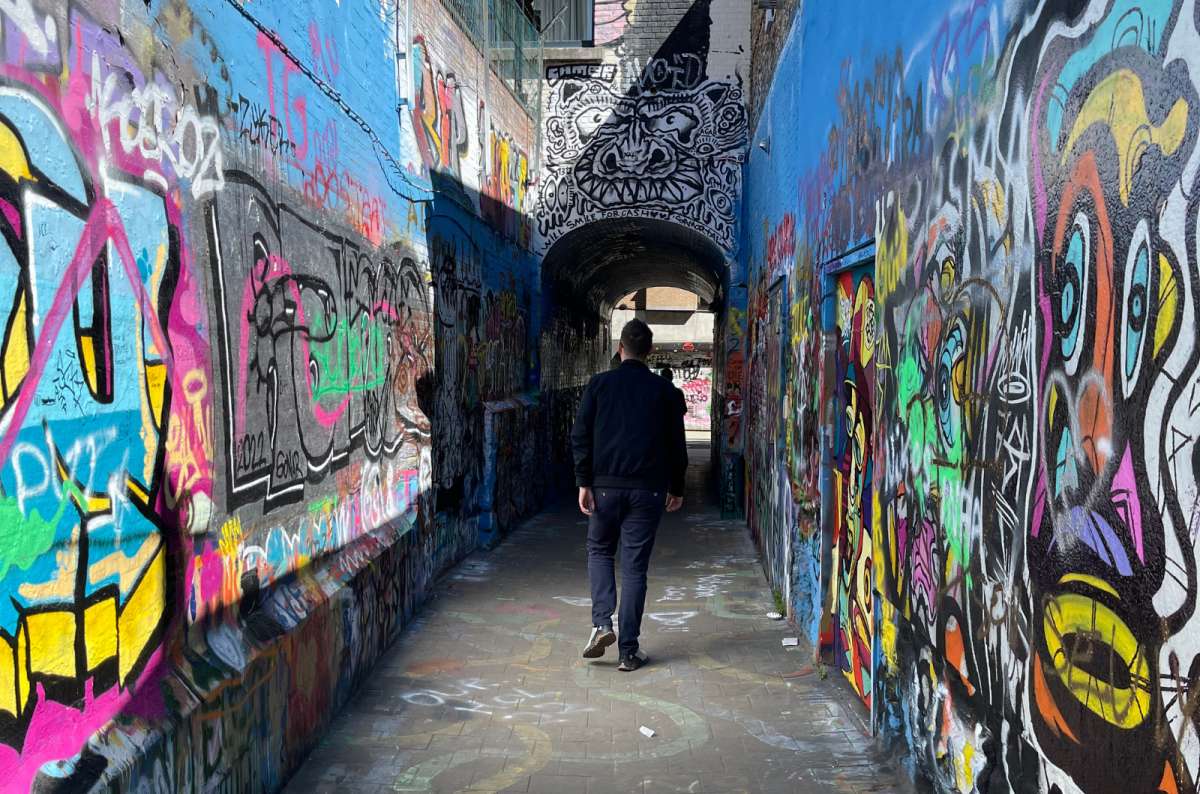
The creative side of Ghent @ Werregarenstraat
Yes, Ghent is absolutely worth visiting. It’s a beautiful city with picturesque canals, medieval architecture, and some of Belgium’s most important cultural landmarks like Gravensteen Castle and the famous Ghent Altarpiece (Mystic Lamb). At the same time, it’s a real, working city, with a food and beer scene that is nothing short of memorable.
You can see the main attractions in a single day in Ghent, but I think staying overnight makes it even better. Evenings in Ghent are atmospheric and far less crowded than during the day. If you have limited time in Belgium, you can easily do a Ghent day trip from Brussels or Bruges, but if you’re choosing where to stay, I’d base myself in Ghent and visit Bruges from there.
For me, Ghent strikes the perfect balance: rich history, great food, and a local vibe that makes it one of my favorite cities in Belgium.
You might also be interested in reading:
Sometimes, all you need to do is take the first step... I've filtered out the best hotels in Ghent for you
Save it for yourself to come back to later, or share with your friends on social media!
I've already planned your ititnerary for the trip, complete with my travel tips.
This post contains affiliate links. If you make a booking through one of my links, I may earn a small commission—at no additional cost to you. Thank you for your support!




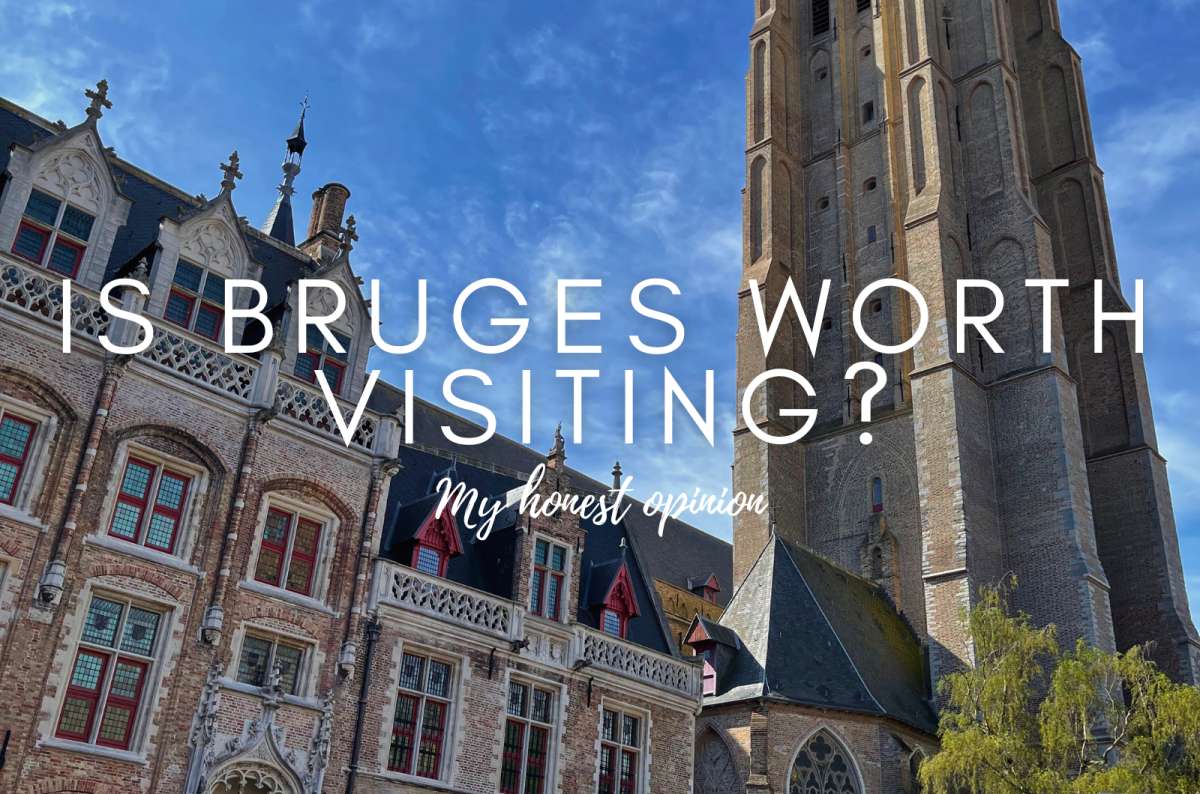
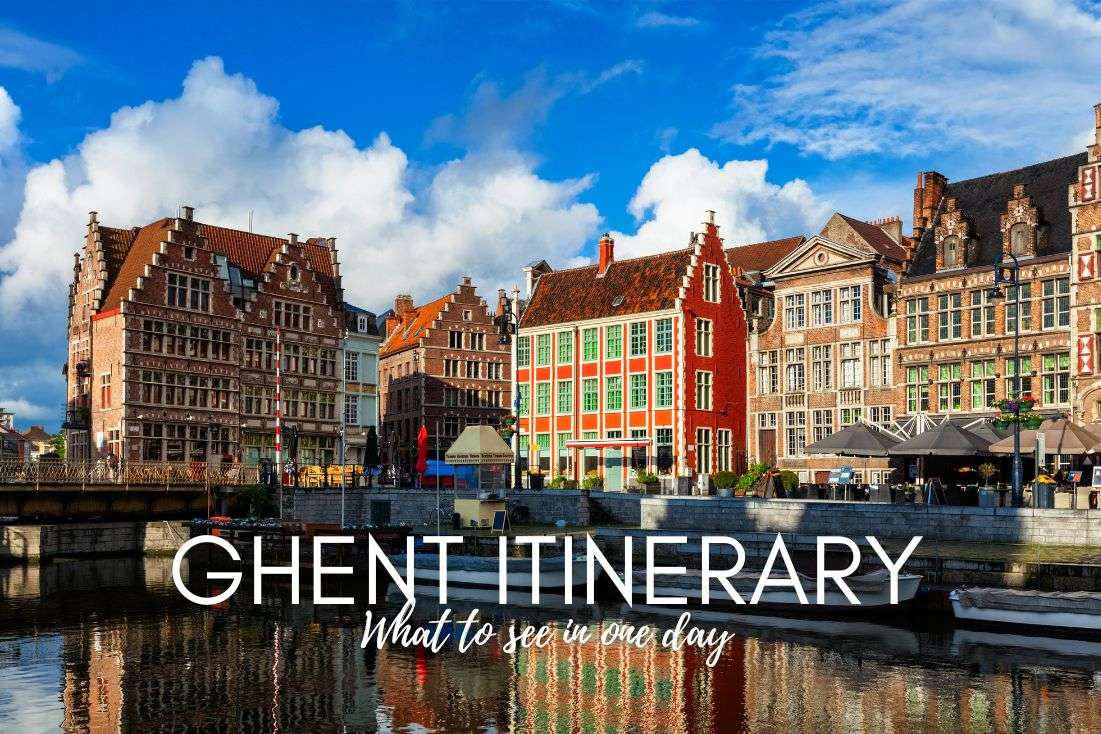
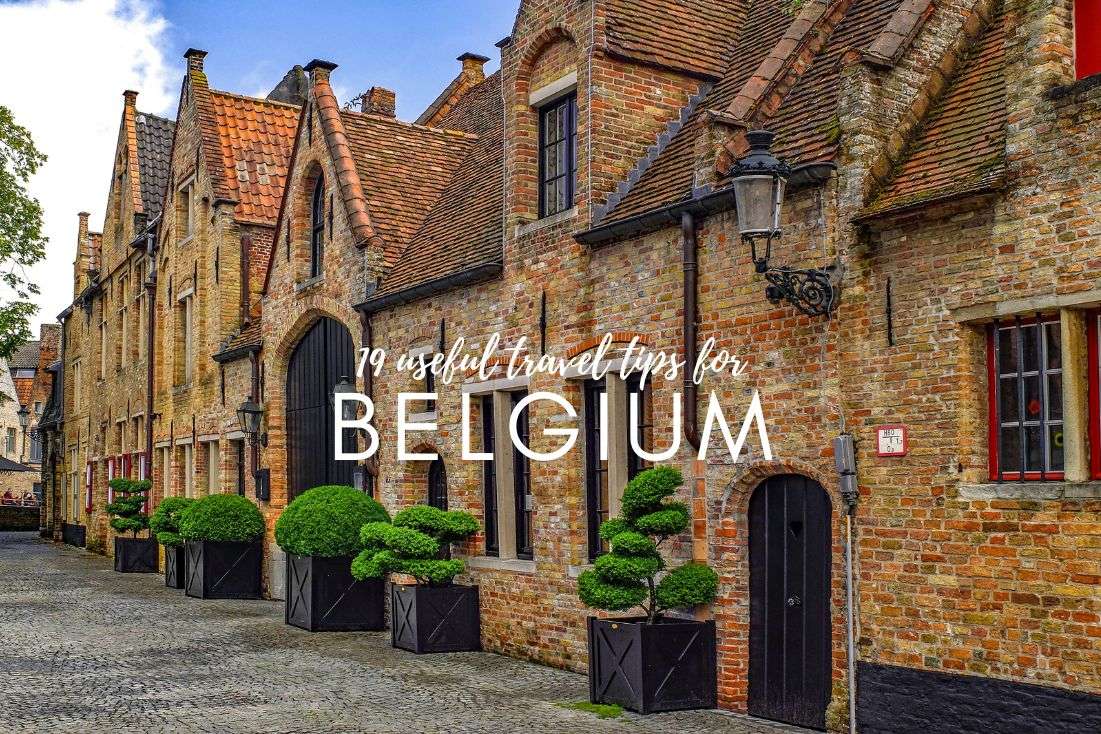



Comments | Thoughts? Give us a shout!